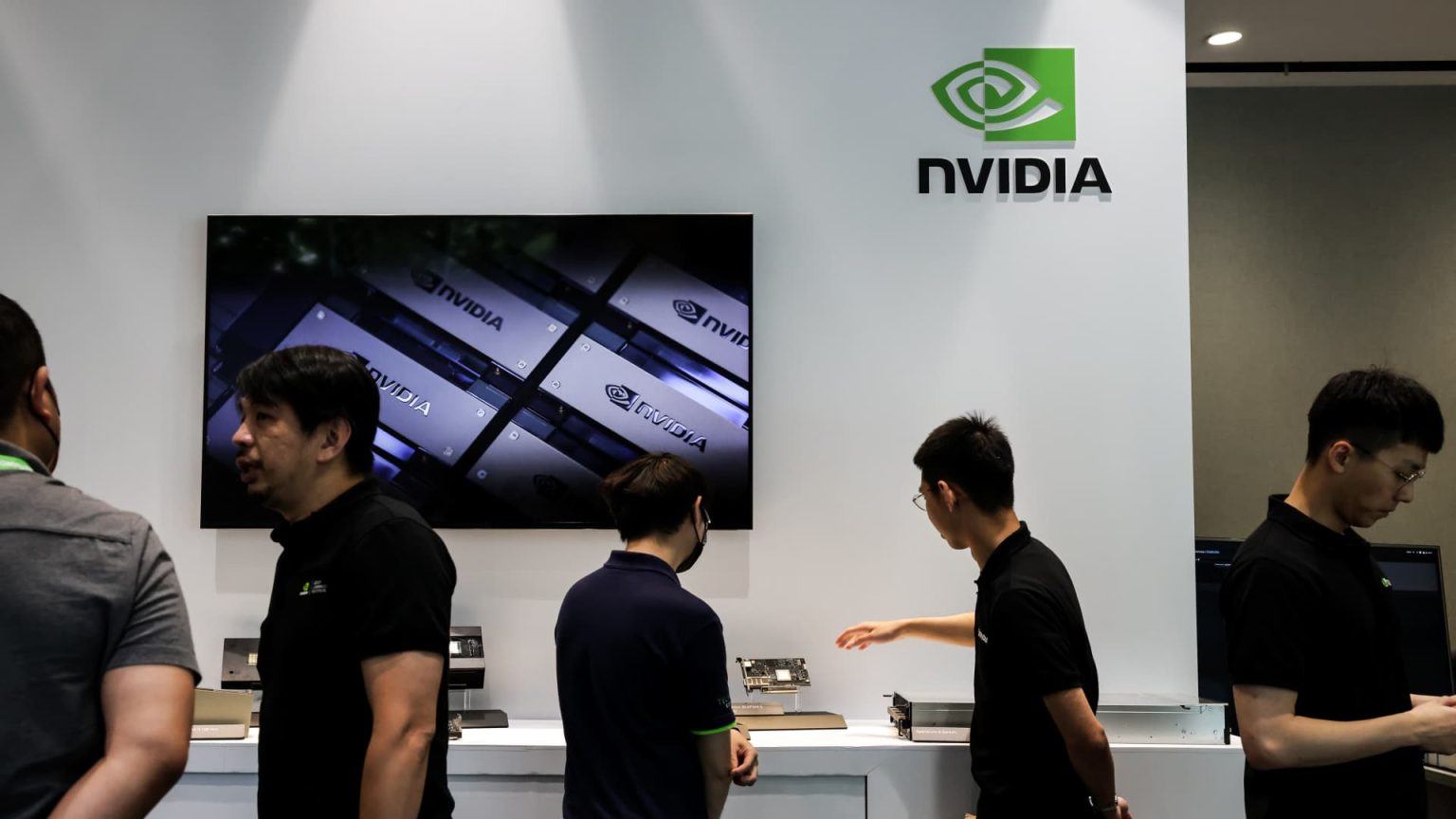Products at the showroom of the Nvidia Corp. offices in Taipei, Taiwan, on Friday, June 2, 2023.
I-Hwa Cheng | Bloomberg | Getty Images
This report is from today’s CNBC Daily Open, our new, international markets newsletter. CNBC Daily Open brings investors up to speed on everything they need to know, no matter where they are. Like what you see? You can subscribe here.
What you need to know today
Soft headline, hard core
The U.S. personal consumption expenditures price index rose just 0.1% in May and 3.8% from a year ago — the lowest year-over-year increase since April 2021. Excluding food and energy prices, the figures are slightly higher. Prices increased 0.3% month over month and 4.6% from a year ago. But the annual number’s still 10 basis points less than economists expected.
Sublime first half for stocks
Pop the champagne: On Friday, U.S. stocks ended in the green for the day, week, quarter and first half of the year. The pan-European Stoxx 600 index added 1.16% to notch an 8.8% gain for strong first-half gains too, amid a lower-than-expected inflation reading for the euro zone. Preliminary data showed headline prices in June rose 5.5% year on year, down from 6.1% in May.
Tesla zooms ahead
Tesla produced 479,700 vehicles and delivered 466,140 vehicles during the second quarter. The delivery figures are an 83% year-over-year increase that beat Wall Street’s expectations. About 96% of the vehicles delivered were the Model Y and Model 3. As Elon Musk’s vehicle company doesn’t report sales figures, delivery numbers offer investors an idea of how many cars the company has been selling.
Goldman’s not-so-golden Apple
Goldman Sachs is talking to American Express to offload its Apple credit card and high-yield savings account, a source told CNBC’s Leslie Picker. Just last October, Goldman CEO David Solomon announced that Goldman and Apple have renewed their partnership through 2029. That’s an abrupt reversal of the partnership, and perhaps a sign that Goldman is looking to pull out of the consumer banking sector.
[PRO] Broadening rally?
The stock market’s astounding rebound in the first half of the year was mostly driven by seven Big Tech stocks — collectively, they accounted for 80% of the gains in the S&P 500, according to UBS. But analysts are optimistic the rally could broaden in the third quarter, especially since a recession may be further off than everyone had expected.
The bottom line
Friday marked the end of the first half of the year and, boy, what a six months it’s been.
The Nasdaq Composite‘s surged 31.7% since the start of 2023, its best first half since 1983. To be sure, part of this is because of the base effect: The Nasdaq was 33.1% down last year. Compared with that dismal showing, any gain would appear monumental.
Yet let’s not discount the Nasdaq’s incredible rally. This year has, in some ways, been a steeper hill to climb for stocks than the last.
Sure, inflation’s been edging down. May’s PCE price index showed all the right numbers moving in the right direction (albeit at a slower pace than everyone had hoped for).
But interest rates are the highest they’ve been in 16 years — and have shot up to those levels in a mere 10 months. Those rates have already broken three regional banks back in March, and one in May. Nonetheless, technology stocks — typically the most sensitive to the cost of borrowing — are still going strong. Indeed, Apple’s market capitalization closed above $3 trillion, making it the first publicly traded company ever to do so. That resilience of stocks, surely, is something to celebrate.
The S&P 500 and Dow Jones Industrial Average didn’t do too shabbily either. The S&P popped 15.9% for its best first half since 2019, while the Dow climbed 3.8%.
And the good news doesn’t stop there. Inflation expectations for a year from now dropped to 3.3%, the lowest level since March 2021. Meanwhile, consumer confidence increased more than expected, according to the University of Michigan sentiment survey.
Much depends on June’s jobs report, out Friday. If it shows the labor market loosening just enough to not add to inflationary pressures, but still tight enough that unemployment won’t drastically increase, then we’ll have a start to the second half of the year as good as the way we ended the first.
Read the full article here




